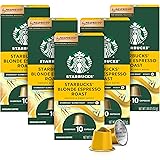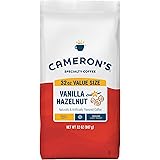Simplifying the Art of Chemex Coffee: Your Guide to a Perfect Pour-Over
There was a time when brewing coffee felt like an intricate science experiment, complete with scales, timers, and precise temperature gauges. While those methods certainly have their place for the dedicated coffee connoisseur, many of us simply desire a beautifully made cup of coffee without the overwhelming complexity. That pursuit of a perfect, yet simple, brew often leads to the elegant Chemex brewer.
As shown in the video above, mastering the Chemex pour-over can be a surprisingly straightforward process. It is understood that the stunning design of the Chemex itself often promises a refined coffee experience, and thankfully, that promise can be delivered through a simplified approach. This guide is crafted to demystify the steps, allowing anyone to consistently achieve a delicious cup of Chemex coffee at home, focusing on practical techniques over overly technical specifications.
Understanding the Chemex: Design Meets Function
The Chemex coffee maker, with its iconic hourglass shape and polished wood collar, is not just a beautiful piece of kitchen equipment; it is a meticulously designed brewing system. Its unique form is not merely aesthetic; it serves a functional purpose, allowing for optimal extraction and aeration during the brewing process. The non-porous glass ensures that no unwanted flavors are imparted to your coffee, preserving the pure taste of the beans.
Its distinct thick filters, which are heavier than standard drip coffee filters, play a crucial role in producing a clean, sediment-free cup. These filters are designed to effectively remove bitterness, sediments, and oils, resulting in a remarkably clear and flavorful coffee. This specific filtration method is often cited as a primary reason for the Chemex’s popularity among those who appreciate nuanced coffee flavors.
Essential Preparations for Brewing Chemex Coffee
Before any brewing can commence, a few preparatory steps are typically undertaken to ensure the best possible foundation for your coffee. These initial stages are often overlooked but are integral to the final quality of the brew. Getting these right sets the stage for a delightful pour-over experience with your Chemex.
The Importance of Water Quality and Temperature
The quality of your water has a profound impact on the taste of your final brew. Using filtered water is highly recommended, as it is largely free of impurities like chlorine and excessive minerals that can negatively influence coffee flavor. Tap water, even if safe to drink, often contains elements that can dull the bright notes of your coffee or introduce off-flavors.
Once your kettle is filled with clean, filtered water, it should be brought to a boil. While the precise temperature is often debated among coffee experts, allowing the water to come to a full boil and then letting it rest for about 30 seconds typically yields an ideal brewing temperature of around 200-205°F (93-96°C). This temperature range is crucial for optimal extraction, ensuring the coffee’s desirable compounds are dissolved without extracting too much bitterness.
Grinding Your Coffee Beans: Consistency is Key
The way your coffee beans are ground significantly affects the extraction process and, consequently, the flavor of your brew. For Chemex coffee, a medium to medium-coarse grind is typically recommended. This consistency resembles coarse sea salt or sand, allowing water to flow through the coffee bed at an appropriate rate without either over-extracting (too fine, leading to bitterness) or under-extracting (too coarse, leading to weakness).
A burr grinder is preferred over a blade grinder because it provides a more uniform particle size. Blade grinders, which essentially chop the beans, produce an inconsistent mix of fine dust and large chunks, leading to uneven extraction. Grinding your beans just before brewing is ideal for freshness, but preparing enough for a couple of brews and storing them in an airtight container, such as a glass Weck jar, can also be a practical solution for daily convenience.
Setting Up Your Chemex Filter
One of the distinctive features of the Chemex is its specialized filter, which is noticeably thicker than those used in standard drip machines. These filters are designed to sit snugly in the brewer and require a specific folding technique to ensure proper fit and function. The correct placement of the filter is essential for facilitating unimpeded pouring and efficient filtration.
Chemex’s square natural filters are commonly used and initially appear confusing. However, the preparation is simple: keep the filter folded and open it so that three layers of paper sit on one side and a single layer on the other. The side with the three layers is then positioned against the pour spout of the Chemex. This strategic placement ensures structural integrity during the pour and prevents the filter from collapsing into the spout, which could impede the flow of your coffee.
Rinsing and Pre-Warming the Chemex
Once the filter is correctly placed, the next crucial step is to thoroughly rinse it with hot water. This process serves two important purposes: it eliminates any papery taste that might otherwise be imparted to your coffee, and it pre-warms the Chemex carafe. Pre-warming the glass helps maintain a consistent brewing temperature, preventing the hot coffee from losing heat too quickly as it drips into a cold vessel.
Water from the recently boiled kettle, having cooled slightly to the optimal brewing temperature, is typically used for this rinse. The water should be poured over the entire filter, saturating all layers. After the rinsing is complete, the water that has collected in the bottom of the Chemex must be carefully discarded. This ensures that the only liquid remaining is the pure coffee concentrate that will be brewed, free from any residual flavors from the filter rinse.
Brewing Your Chemex Coffee: The Pour-Over Technique
With the preparatory steps complete, the focal point of the Chemex experience—the pour-over itself—is approached. This stage involves carefully pouring hot water over the coffee grounds, allowing for a controlled extraction of flavors. While precision can be pursued to various degrees, a simplified and attentive approach still yields remarkable results.
Coffee-to-Water Ratio: Finding Your Preference
Determining the right amount of coffee is often a matter of personal preference, balancing desired strength with flavor complexity. The Chemex brand itself suggests a starting point of one heaping tablespoon of coffee grounds per five-ounce cup of coffee. Therefore, if an 8-cup Chemex is being filled, approximately eight heaping tablespoons would be added for a full container. This volumetric guideline provides an accessible method for those who prefer not to use a digital scale, allowing for easy adjustment based on individual taste preferences. Experimentation is encouraged to discover the ideal ratio for your palate.
The Art of the Bloom: First Pour
After the coffee grounds are added to the pre-rinsed filter, the first pour, known as the “bloom,” is executed. This initial pour involves gently saturating all the coffee grounds with hot water, ensuring they are evenly wet. The purpose of the bloom is to allow the coffee to “degas,” releasing trapped carbon dioxide. This gas release, observable as the grounds puff up and expand, is essential for even extraction in subsequent pours.
The bloom typically lasts for about 30 to 45 seconds. During this period, fresh coffee will visibly swell and bubble, indicating that the gases are escaping. If your coffee does not bloom significantly, it may suggest that the beans are older or have been pre-ground for a while. A robust bloom is a good indicator of fresh coffee and contributes significantly to the final taste profile, preparing the grounds for optimal flavor extraction.
The Subsequent Pours: Building Flavor
Following the bloom, the second pour is initiated. Water is slowly poured in a circular fashion, starting from the center and moving outwards, avoiding direct contact with the filter walls. This method helps maintain a level coffee bed and ensures uniform saturation of the grounds. The goal is to keep the water level just below the top of the Chemex filter, allowing gravity to slowly draw the water through the coffee bed.
If a full container of coffee is desired, additional water is continuously added as the initial water drains down. This continuous pouring process continues until the kettle is emptied or the desired volume is reached. For larger Chemex models (6, 8, and 10 cup), a small button or indentation on the side of the carafe often serves as a helpful visual marker, indicating when the brewer is approximately halfway full. Once the desired amount of coffee has been brewed, the filter with the spent grounds is carefully removed and discarded, leaving behind a perfectly brewed cup of Chemex coffee ready to be enjoyed.







